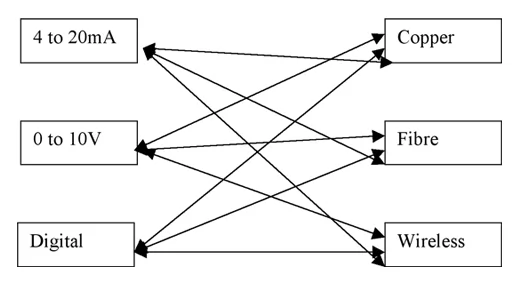Transmission of 4 to 20mA, 0 to 10V and digital signals over an IP network
Sometimes it may be favourable to directly connect to a building controls device or sensor without putting the signal through an outstation or controller. Sensors and actuators can be Ethernet enabled using ‘distributed I/O modules’. Such modules read in analogue or digital signals then transmit them across an IP network to software that has been specifically written to interface with the module.

This solution can save a large sum in cable installation costs when adding remote controllers / cameras to access control systems or IP CCTV networks. It is possible to use an existing RS485 twisted pair previously employed for PTZ signalling to upgrade your existing camera connection to an IP compliant one.
Ethernet based distributed I/O modules allow any signal type over any media, a specific example is given above, although any of the following permutations are possible:
